Instruction
Have the chipping yips? Here’s a drill to help
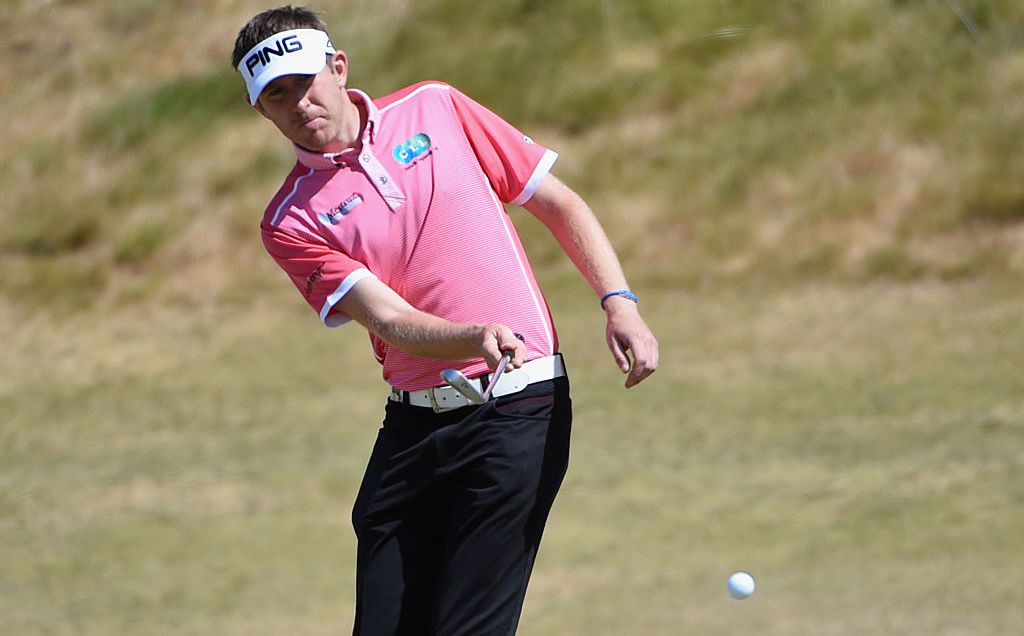
Note: If you don’t have the chipping yips, hit the back button right now on your browser. You don’t need to hear this stuff! But if you do have them, or are really struggling with your short game, read on.
—
Oh man, the chipping yips. They are such a horrible thing to watch, yet you can’t look away. It’s like watching a wreck at an Indy Car race.
Recently, I was asked if the chipping yips are curable, and unfortunately I have to say it’s very doubtful. I have never seen an amateur cure them in my lifetime on the lesson tee. Tiger Woods is the only player I’ve seen who has seemingly conquered them, but I will withhold my verdict until he comes back to play in 2017.
Generally, the chipping yips start as a mechanical issue, leading to chunks and skulls, or just poor chip shots overall. Eventually, these poor shots erode confidence, and your brain starts tell your body you can’t handle the shot at hand. This inner doubt leads to some involuntary action as the club nears impact, making it very difficult to hit the golf ball properly. From there, unless you cross the wires mechanically, you are often left to struggle forever.
While I don’t think chipping yips can be cured, I do believe they can be suppressed, and that’s what the rest of this article is about. I can think of a few players off the top of my head who have battled this very issue:
- Brock Mackenzie, a Web.com Tour player, now chips with one hand.
- Chris Smith, a PGA Tour winner, chips cross-handed.
- Doug Barron, a former PGA Tour player, also chips cross-handed.
Let me get you to understand how the yips are often created, and give you a drill that will help you combat them if and when when they show up. Hopefully, you can make a mechanical change before things get too bad.
How a chip shot should look
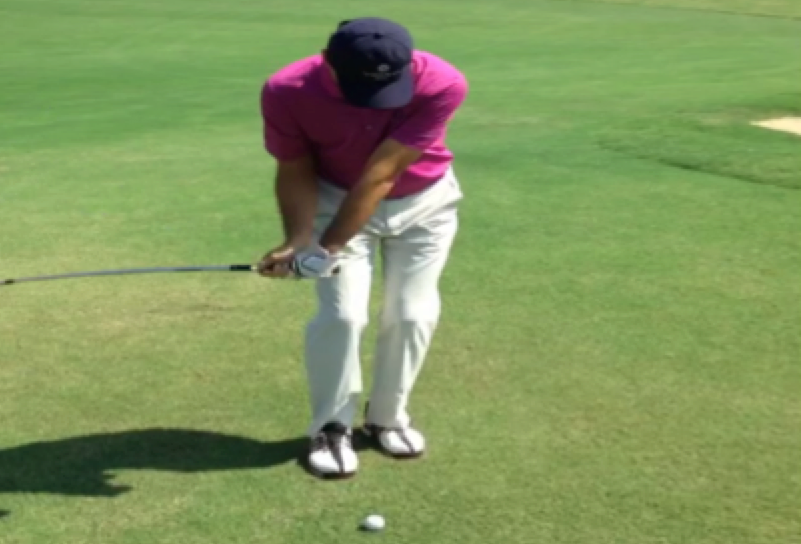
On the backswing, there should be some type of loading of the club to create a slight bit of lag on the way down. This can be done with a quick setting of the wrists, which you see in Rory McIlroy’s move, or with the change of direction at the top, as Steve Stricker does. But either way, there needs to be a bit of load.
It’s this lag that must be maintained into and through impact in order to maintain solid and consistent contact around the greens.
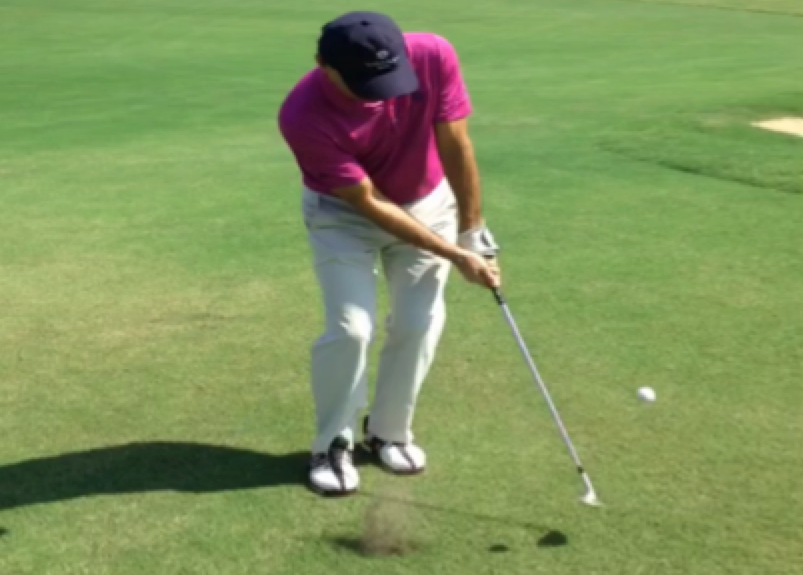
Next comes the rotation or pivot of the body through the shot, which keeps “lag pressure” on the club shaft through the impact zone, and pulls the clubhead into the ball with solid impact alignments. This is mainly a function of the rear shoulder maintaining a constant velocity through impact. When it slows or does not rotate toward the target, the hands take over. And when the hands take on too much of a role, the golfer is left very vulnerable to the yips.
What a yip looks like
The main problem with chipping-yippers is their inability to keep the pivot moving through the shot. Of course, there are different types of yips that occur for various reasons, but this is by far the most common.
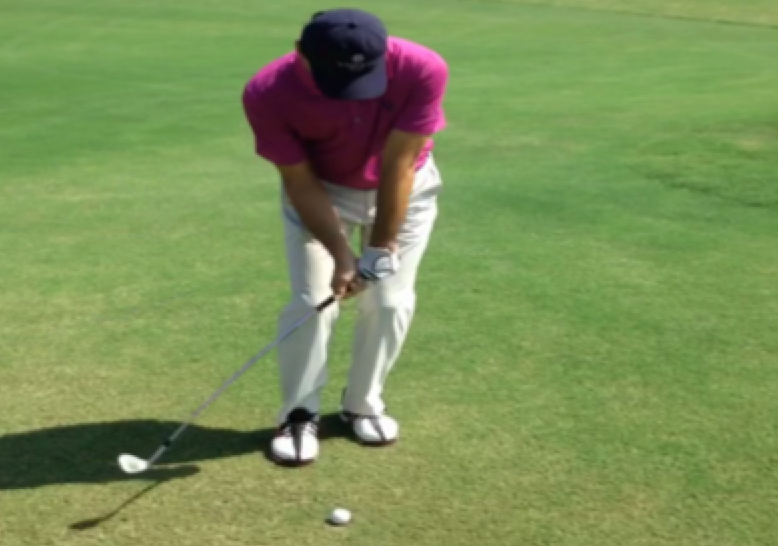
Here you can see this player has the club lagging, but notice the right shoulder. You can see it is staying too far “back,” and thus the shoulders are not opening up as quickly as they should at this point in the downswing.
An bad shot is about to occur. Yikes.
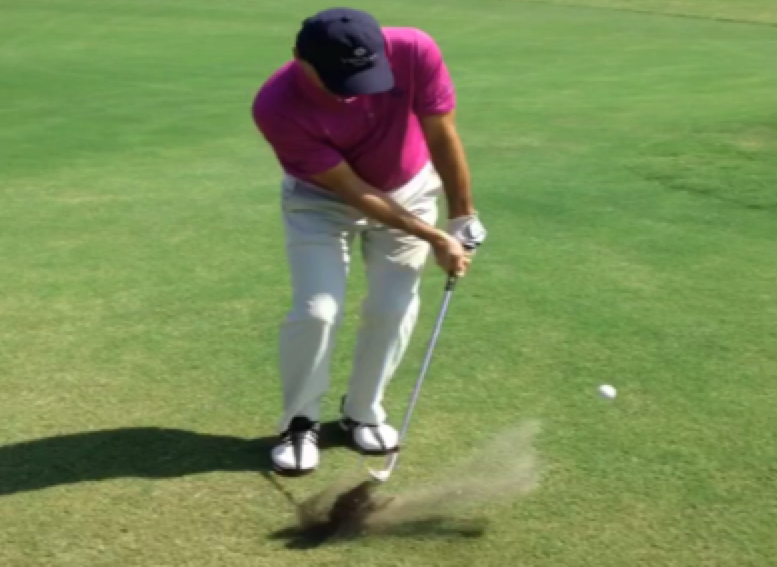
You can this see this shot was hit fat, and the right shoulder has moved forward very little from the last frame above. When the pivot slows, the player tends to fall backward, moving the low point rearward. And from there, you are in trouble.
So how do you stop sticking your pick in the ground?
The One-Hander
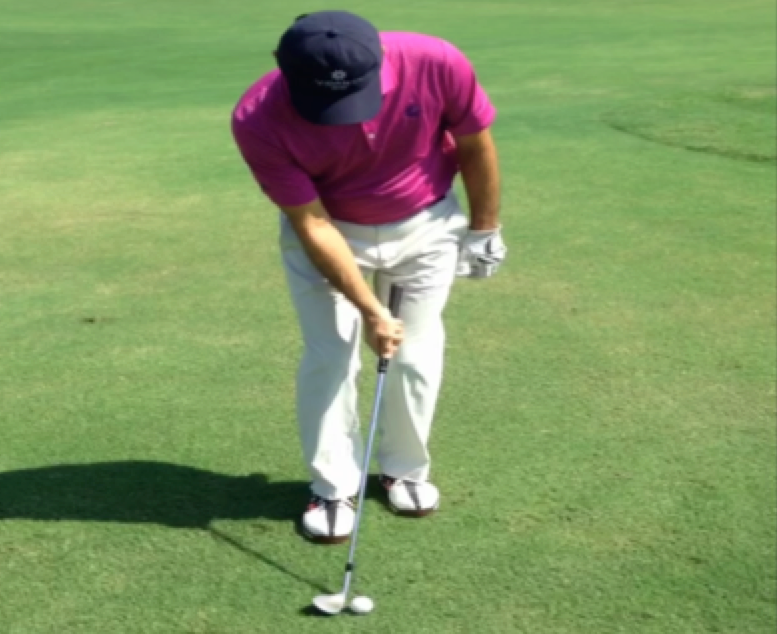
Set up with your rear hand on the grip as shown. Note that the handle and forearm form a letter “V” of a certain angle, and I don’t want to see that angle change.
The only way to achieve this is to use the pivot of your body to transport your arms, hands and club into impact, instead of flipping or blocking with your hands.
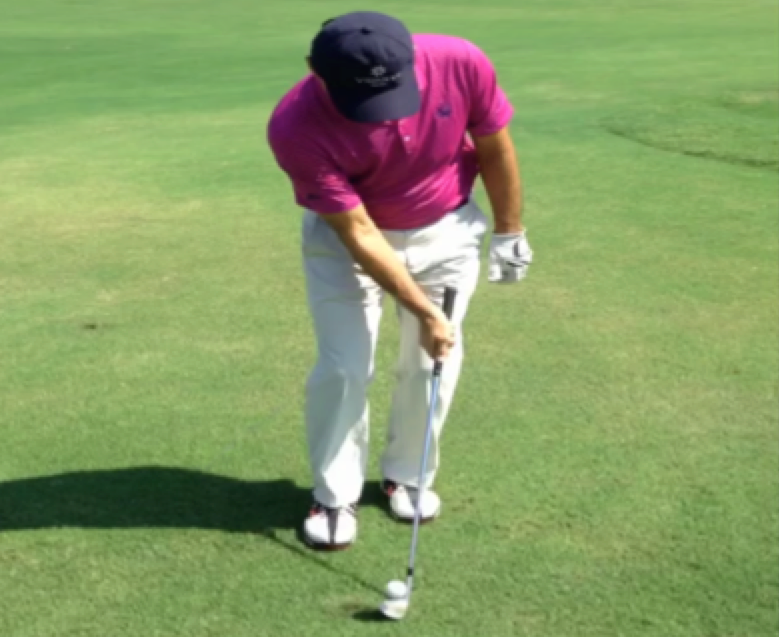
At impact (above), notice how far forward the rear shoulder has rotated! You can also see that the rear wrist is bent and the “V” is still intact, as it was during address.
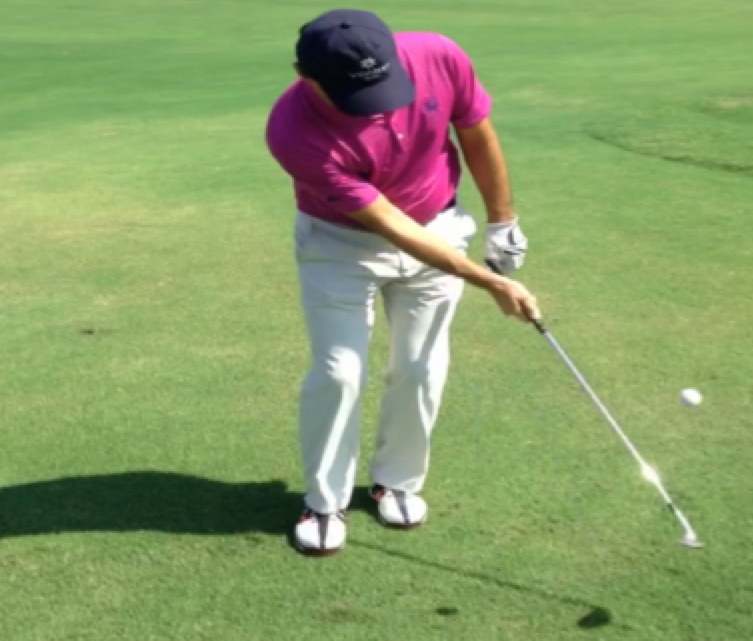 Even in the frame above, the right shoulder is still moving forward and the lag is still intact. This is the way to pitch the ball like a pro!
Even in the frame above, the right shoulder is still moving forward and the lag is still intact. This is the way to pitch the ball like a pro!
Still have doubts that the pivot of the body or right shoulder controls lag pressure? Check out this photo comparison below. There’s significantly more rotation in the right frame.
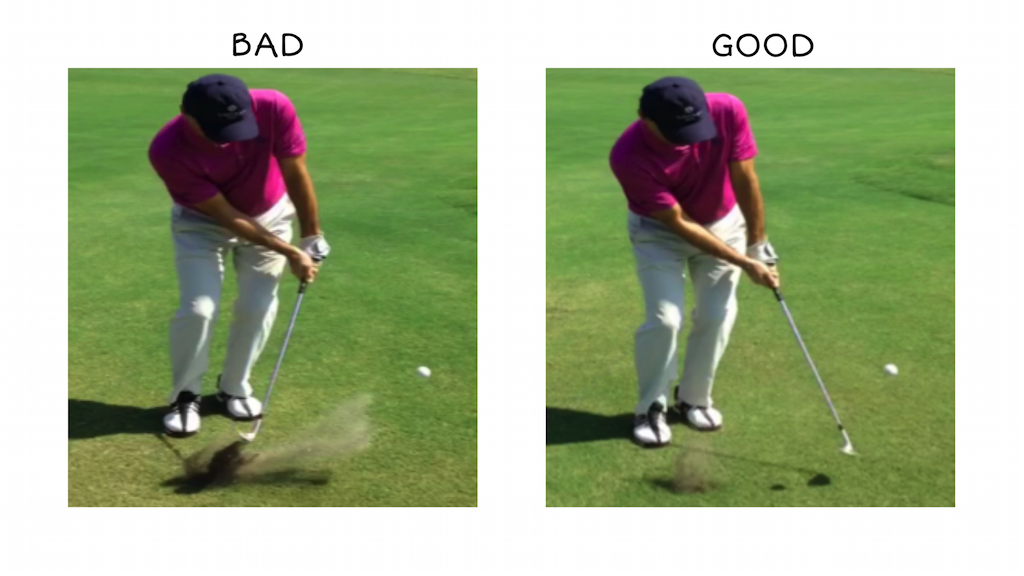
So take your time and understand that if you slap at the ball it’s not a problem with your hands; it’s a reaction to your pivot slowing down. Try the one-handed pitching drill and I promise you will improve.
- LIKE94
- LEGIT12
- WOW5
- LOL1
- IDHT0
- FLOP6
- OB3
- SHANK49
Instruction
Clement: Laid-off or perfect fade? Across-the-line or perfect draw?

Some call the image on the left laid off, but if you are hitting a fade, this could be a perfect backswing for it! Same for across the line for a draw! Stop racking your brain with perceived mistakes and simply match backswing to shot shape!
- LIKE0
- LEGIT0
- WOW0
- LOL0
- IDHT0
- FLOP0
- OB0
- SHANK1
Instruction
The Wedge Guy: The easiest-to-learn golf basic

My golf learning began with this simple fact – if you don’t have a fundamentally sound hold on the golf club, it is practically impossible for your body to execute a fundamentally sound golf swing. I’m still a big believer that the golf swing is much easier to execute if you begin with the proper hold on the club.
As you might imagine, I come into contact with hundreds of golfers of all skill levels. And it is very rare to see a good player with a bad hold on the golf club. There are some exceptions, for sure, but they are very few and very far between, and they typically have beat so many balls with their poor grip that they’ve found a way to work around it.
The reality of biophysics is that the body moves only in certain ways – and the particulars of the way you hold the golf club can totally prevent a sound swing motion that allows the club to release properly through the impact zone. The wonderful thing is that anyone can learn how to put a fundamentally sound hold on the golf club, and you can practice it anywhere your hands are not otherwise engaged, like watching TV or just sitting and relaxing.
Whether you prefer an overlap, interlock or full-finger (not baseball!) grip on the club, the same fundamentals apply. Here are the major grip faults I see most often, in the order of the frequency:
Mis-aligned hands
By this I mean that the palms of the two hands are not parallel to each other. Too many golfers have a weak left hand and strong right, or vice versa. The easiest way to learn how to hold the club with your palms aligned properly is to grip a plain wooden ruler or yardstick. It forces the hands to align properly and shows you how that feels. If you grip and re-grip a yardstick several times, then grip a club, you’ll see that the learning curve is almost immediate.
The position of the grip in the upper/left hand
I also observe many golfers who have the butt of the grip too far into the heel pad of the upper hand (the left hand for right-handed players). It’s amazing how much easier it is to release the club through the ball if even 1/4-1/2″ of the butt is beyond the left heel pad. Try this yourself to see what I mean. Swing the club freely with just your left hand and notice the difference in its release from when you hold it at the end of the grip, versus gripping down even a half inch.
To help you really understand how this works, go to the range and hit shots with your five-iron gripped down a full inch to make the club the same length as your seven-iron. You will probably see an amazing shot shape difference, and likely not see as much distance loss as you would expect.
Too much lower (right) hand on the club
It seems like almost all golfers of 8-10 handicap or higher have the club too far into the palm of the lower hand, because that feels “good” if you are trying to control the path of the clubhead to the ball. But the golf swing is not an effort to hit at the ball – it is a swing of the club. The proper hold on the club has the grip underneath the pad at the base of the fingers. This will likely feel “weak” to you — like you cannot control the club like that. EXACTLY. You should not be trying to control the club with your lower/master hand.
Gripping too tightly
Nearly all golfers hold the club too tightly, which tenses up the forearms and prevents a proper release of the club through impact. In order for the club to move back and through properly, you must feel that the club is controlled by the last three fingers of the upper hand, and the middle two fingers of the lower hand. If you engage your thumbs and forefingers in “holding” the club, the result will almost always be a grip that is too tight. Try this for yourself. Hold the club in your upper hand only, and squeeze firmly with just the last three fingers, with the forefinger and thumb off the club entirely. You have good control, but your forearms are not tense. Then begin to squeeze down with your thumb and forefinger and observe the tensing of the entire forearm. This is the way we are made, so the key to preventing tenseness in the arms is to hold the club very lightly with the “pinchers” — the thumbs and forefingers.
So, those are what I believe are the four fundamentals of a good grip. Anyone can learn them in their home or office very quickly. There is no easier way to improve your ball striking consistency and add distance than giving more attention to the way you hold the golf club.
More from the Wedge Guy
- The Wedge Guy: Golf mastery begins with your wedge game
- The Wedge Guy: Why golf is 20 times harder than brain surgery
- The Wedge Guy: Musings on the golf ball rollback
- LIKE87
- LEGIT13
- WOW6
- LOL1
- IDHT0
- FLOP4
- OB1
- SHANK8
Instruction
Clement: Stop ripping off your swing with this drill!

Not the dreaded headcover under the armpit drill! As if your body is defective and can’t function by itself! Have you seen how incredible the human machine is with all the incredible feats of agility all kinds of athletes are accomplishing? You think your body is so defective (the good Lord is laughing his head off at you) that it needs a headcover tucked under the armpit so you can swing like T-Rex?
- LIKE0
- LEGIT2
- WOW2
- LOL0
- IDHT0
- FLOP0
- OB0
- SHANK2
-

 19th Hole2 weeks ago
19th Hole2 weeks agoDave Portnoy places monstrous outright bet for the 2024 Masters
-

 19th Hole4 days ago
19th Hole4 days agoJustin Thomas on the equipment choice of Scottie Scheffler that he thinks is ‘weird’
-

 19th Hole2 weeks ago
19th Hole2 weeks agoTiger Woods arrives at 2024 Masters equipped with a putter that may surprise you
-

 19th Hole4 days ago
19th Hole4 days ago‘Absolutely crazy’ – Major champ lays into Patrick Cantlay over his decision on final hole of RBC Heritage
-

 19th Hole2 weeks ago
19th Hole2 weeks agoTwo star names reportedly blanked Jon Rahm all week at the Masters
-

 19th Hole1 week ago
19th Hole1 week agoReport: LIV Golf identifies latest star name they hope to sign to breakaway tour
-

 19th Hole2 weeks ago
19th Hole2 weeks agoNeal Shipley presser ends in awkward fashion after reporter claims Tiger handed him note on 8th fairway
-

 19th Hole1 week ago
19th Hole1 week agoBrandel Chamblee has ‘no doubt’ who started the McIlroy/LIV rumor and why



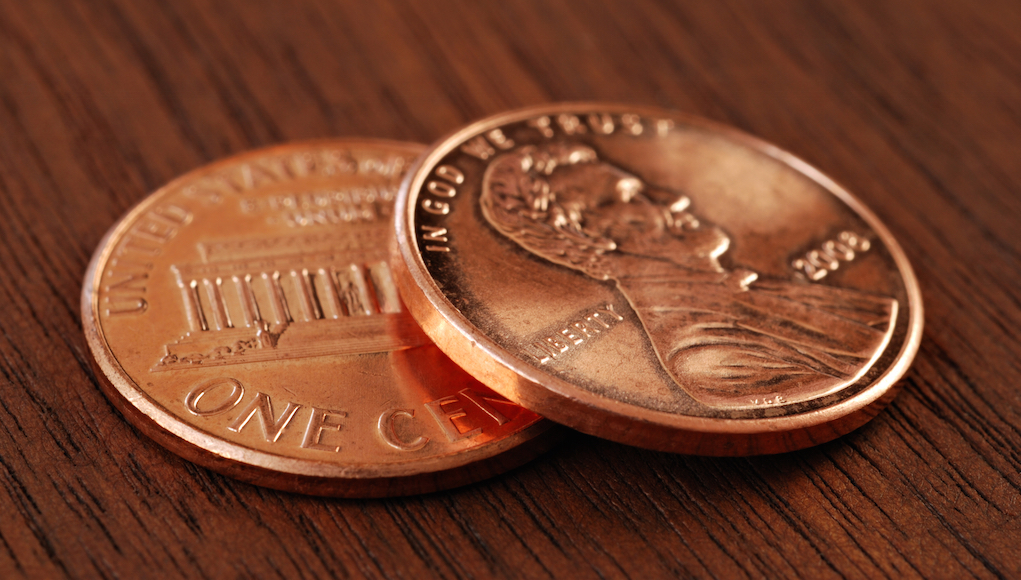
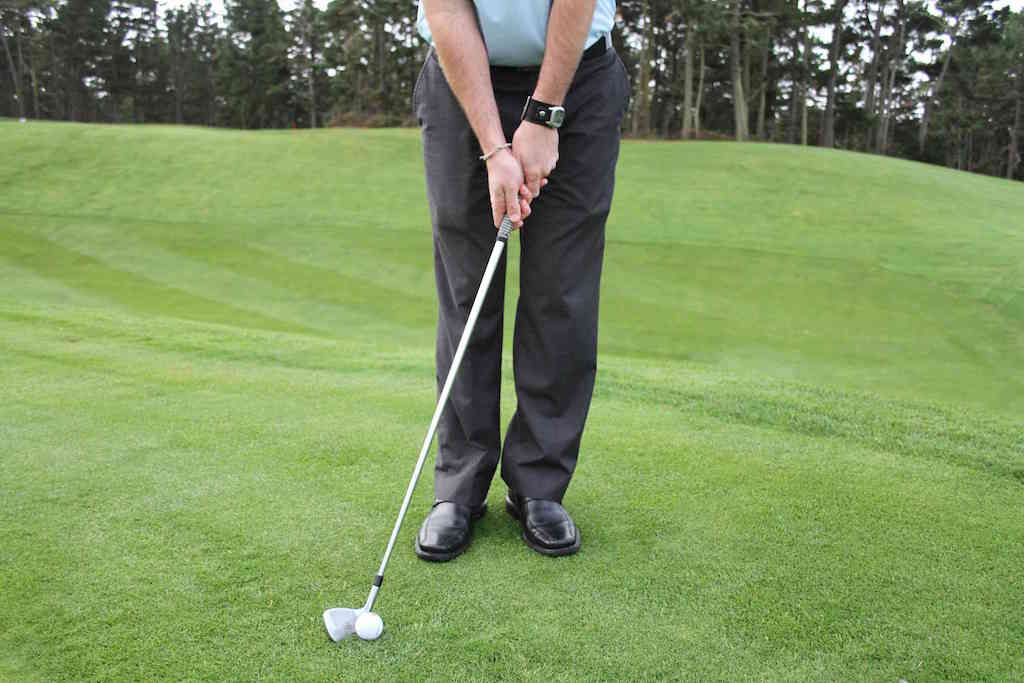
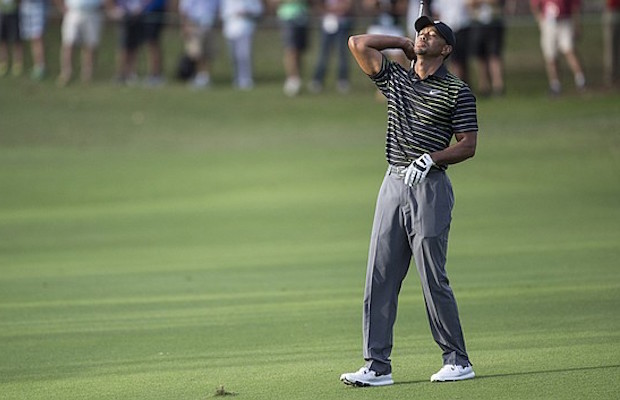
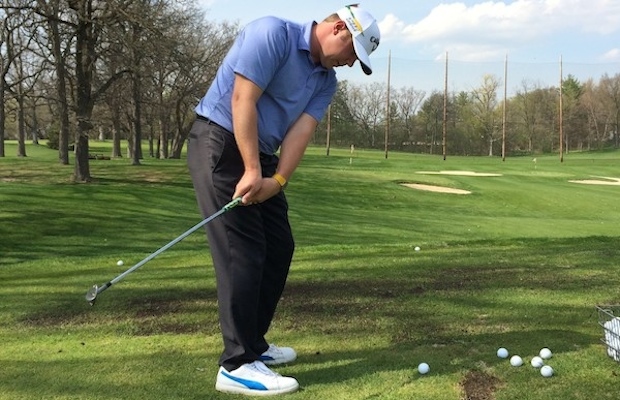
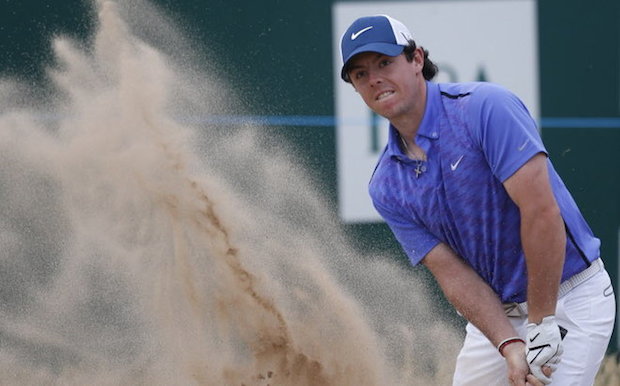
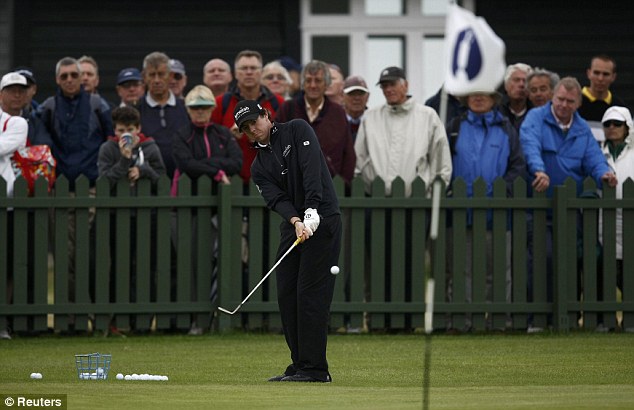













Pingback: Mastering Short Game Shots: Conquer Fear and Doubt! – linkedgreens
Keith W.
Oct 29, 2016 at 7:01 am
The CHIP YIPS ARE REAL! At one time I had a +2.3 handicap and my short game was so good that I was described as “being able to get up-and-down out of a ball washer”…not a bad compliment, and true. Things changed, and for 10 years my short game became a total liability. But I found a fix that worked for me that eliminated the need to think about technique and built trust in my chipping again.
Rather than thinking about the swing or manipulating my wrists, hands, club face or anything else I remembered something I had told and taught to junior golfers…”the club is smarter than you are”. Translation: the club has plenty of loft, and has bounce to accommodate the lie conditions…all it needs is a pilot.
The FIX…instead of letting the hands, arms, and shoulders dictate the results, let the club dictate the shot. This is accomplished by addressing the ball in a slightly more upright position, taking the club back to what is appropriate for the length of the shot and once the backswing is in place simply drop the club from the top of the swing and allow the weight of the head to do its magic on the downswing. I could really feel the head and it works because the club has no fear, no doubt, and no brain. If you try this you will find that the club will do its job as manufactured.
After applying this logic (and a couple of extra pieces of lead tape to and L wedge) in practice for about an hour on a chipping green, I found that I was no longer guiding the club to avoid errant shots, but instead releasing the head again and thereby curing the mechanical failures. After practicing this for a couple of days I took it to the course and had ZERO fat or skulled shots, and in fact reclaimed 90% of my proficiency with my lob wedge.
Fast forward 3 years…since putting this into practice I have cured the chip yips and my confidence in my short game has returned. I don’t even think about it anymore…except for today, writing this advice.
Steve S
Oct 28, 2016 at 9:48 am
Yips are a mental problem that CAN be cured. Confidence cures the yips. Confidence is gained by a lot of successful practice. Successful practice comes from good fundamentals. This applies to all sports and physical activity. A strong willed person can overcome almost any physical problem(pertaining to sports). A weak willed person needs to work on their personality.
tom stickney
Oct 28, 2016 at 2:55 pm
Steve– ever taught someone with the yips before? It’s easy to help them overcome them in practice but when the light comes on during the tournament all bets are off.
Scooter McGavin
Oct 28, 2016 at 4:54 pm
Sorry, Tom, but Steve is mostly right. “Yips” is just a name people made up to make an excuse for their poor performance at something. When the “tournament light goes on” the golfer needs to have put in the appropriate preparation (slow fundamental practice) so they can rely on that. Calling it “the yips” only perpetuates the problem because it makes it sound like a disease that is out of the golfer’s control (“Oh noes, I got de yips!”). Honestly, I think golfers would be much better off if everyone stopped calling it the yips and just said “Hey, I’m having some problems chipping (putting, driving, etc.). I need to go to the chipping green and sort them out with basic, patient fundamental practice”. As a teacher, if someone tells you they have the yips, the best thing you can do for them is tell them there’s no such thing, and that they’ve just developed a flaw they need to work out.
Double Mocha Man
Oct 27, 2016 at 10:52 am
Interesting that you didn’t go on to mention the skulled shots. But, as is obvious, they are the mental (faulty) correction to hitting fat shots. So they go together.
tom stickney
Oct 27, 2016 at 4:24 pm
not always…could be a faulty pivot only.
Charlie
Oct 27, 2016 at 8:27 am
Tiger comment in 3…2…1…
The dude
Oct 28, 2016 at 6:08 am
He is set to retire after 17’….I promise